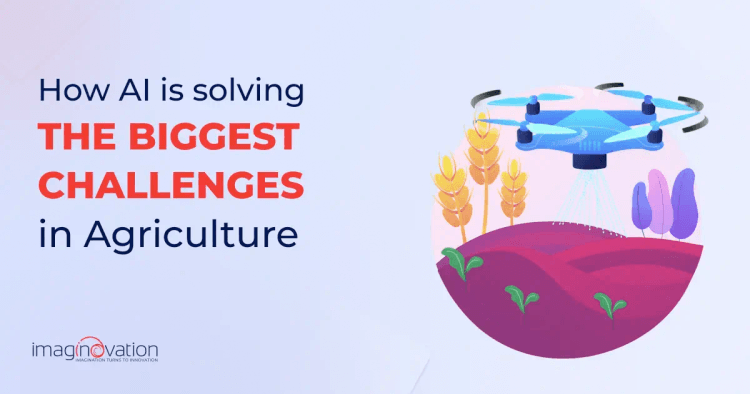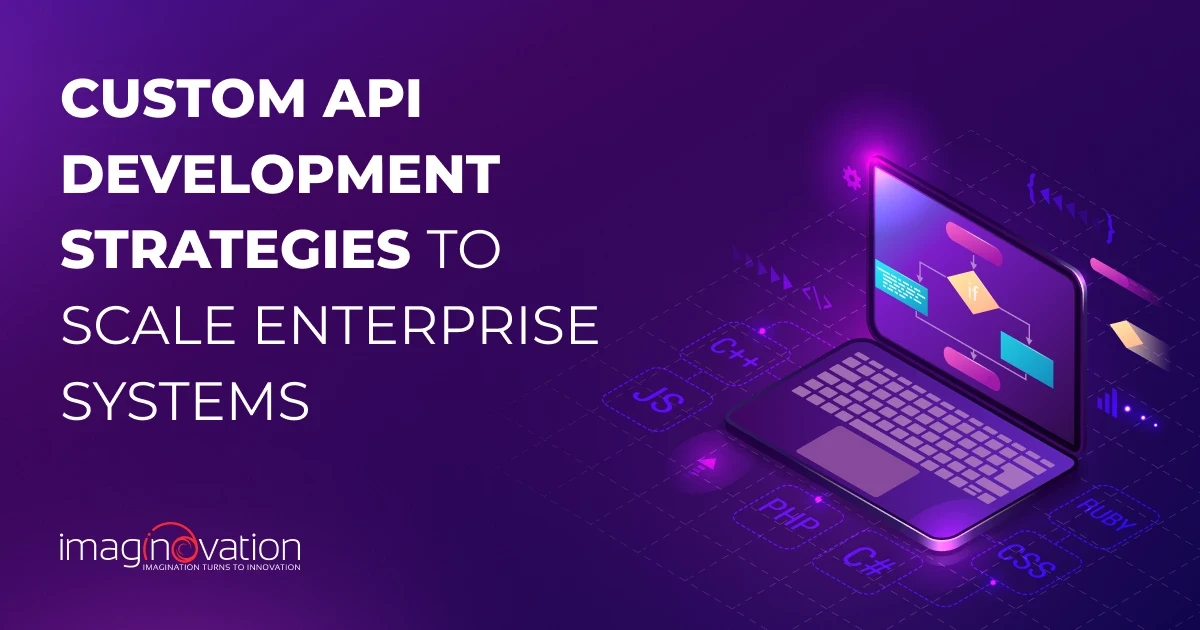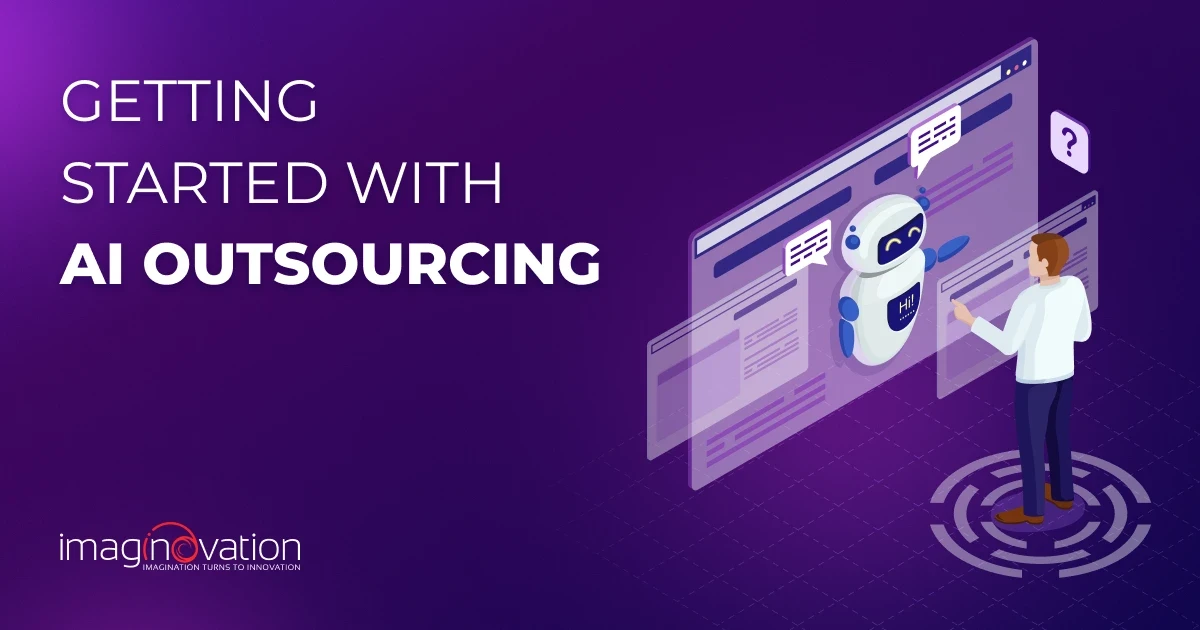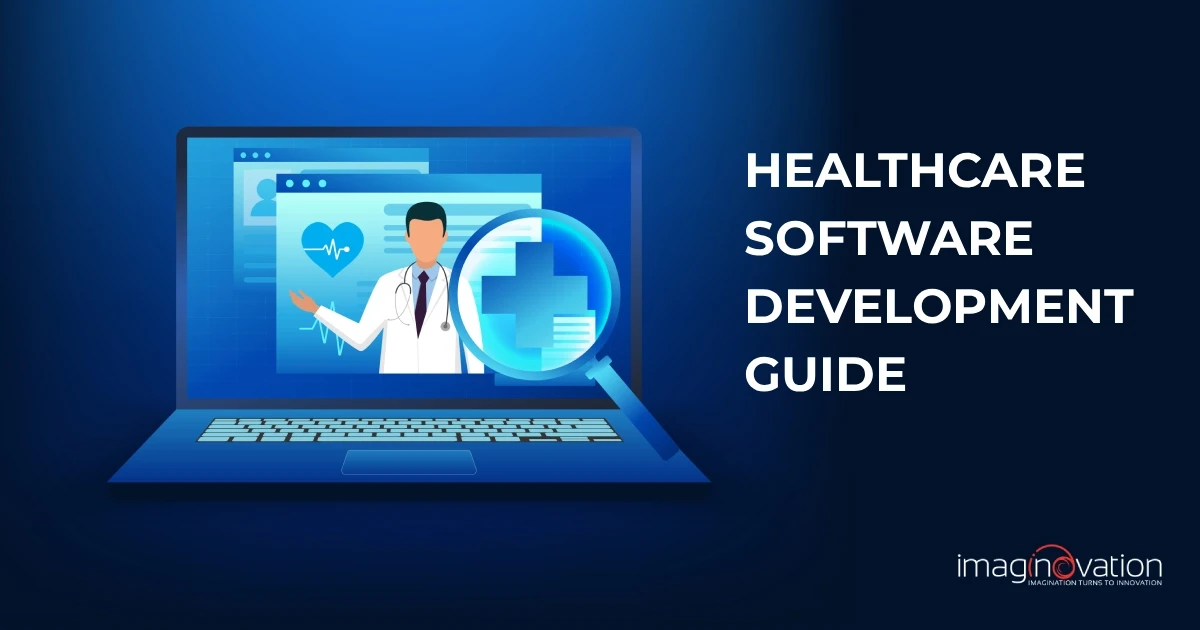Agriculture has always been an industry of thin margins. What’s different in 2025 is the pace of change. Global demand is rising, yet resources are stretched. Supply chains are volatile. And new compliance rules mean leaders are managing complexity at a scale the industry hasn’t seen before.
For years, agriculture lagged behind other sectors in adopting digital tools. That’s starting to shift.
Artificial intelligence is moving from pilot projects to full-scale deployments, helping organizations predict yields more accurately, optimize resources, and streamline operations.
The question for today’s leaders isn’t whether AI can help. It’s where it creates the most value, how fast ROI shows up, and what it takes to scale beyond experiments. That’s what we’ll explore in this guide.
What Are the Biggest Operational Challenges Facing Agriculture Today?
Agriculture isn’t struggling with just one issue. It’s a stack of pressures that compound each other. Farms are being asked to produce more with fewer people, rising costs, and less predictable conditions.
1. Labor Shortages
Labor shortages sit at the top of the list.
As Pete Peranzo, Co-Founder of Imaginovation, explained: “U.S. farms are still deeply reliant on immigrant labor. When labor policy shifts, agriculture feels it immediately, and AI-powered machines are already starting to fill the gap.”
Farmers are running out of people willing to do the work, and it’s accelerating the push toward automation.
2. Climate Volatility
Climate volatility adds another layer of uncertainty.
While weather has always been agriculture’s wild card, today’s extremes, from droughts to floods and wildfires, are hitting with more frequency and less predictability.
That unpredictability wrecks planning cycles and leaves entire harvests exposed.
3. Increasing Costs
And even when weather and labor line up, rising input costs continue to squeeze margins.
Fertilizer, pesticides, energy, and water are more expensive than ever, forcing operators to make tough trade-offs between cost control and yield.
4. Compliance With the Industry
Finally, compliance and accountability are reshaping the industry.
With consumers more informed and regulators enforcing stricter standards, farms and food companies can’t hide inefficiencies, poor quality, or unsustainable practices.
Every step of the supply chain is under scrutiny, and data that used to reside in silos now must be transparent.
How is AI Addressing Labor Shortages in Agriculture?
Labor shortages aren’t new in farming, but the stakes are higher than ever. Fewer workers mean slower harvests, higher costs, and missed opportunities. That’s where AI-powered machines are quietly stepping in, and in some cases, outperforming human labor altogether.
Take John Deere’s See & Spray™ technology, born from Blue River Technology. Instead of spraying entire fields, these rigs utilize cameras and AI models to detect individual weeds and apply spray only where necessary.
The results?
Field trials in Arkansas showed 43–59% less herbicide use compared to conventional methods, saving farmers both money and time while reducing the number of passes a worker or machine has to make across the field.
That’s a big deal when labor is already stretched thin.
Why does this matter for operations leaders? Because AI tools are solving multiple problems at once:
- Less field scouting: AI handles the monitoring, freeing up labor for higher-value work.
- Lower costs: Targeted spraying reduces chemical usage and fuel consumption.
- More predictability: Reduced dependency on unpredictable labor markets.
Think about it: instead of scrambling for seasonal workers or risking delays, farms can now rely on systems that work around the clock and deliver measurable ROI.
That’s a long-term competitive advantage.
How Can AI Reduce Resource Costs and Boost Yields?
Every wasted gallon of water or over-applied bag of fertilizer eats into already thin margins. AI changes that equation by making resource use precise, not approximate.
With AI-driven precision farming, sensors and machine learning models track soil health, crop growth, and microclimate conditions in real time.
That data powers decisions about exactly how much water, fertilizer, or pesticide a field needs; no more, no less.
The results are measurable:
- AI irrigation systems have shown 25–30% reductions in water use while keeping yields stable.
- Machine-learning models for soil and crop mapping have delivered yield improvements of up to 13% simply by aligning input use with actual field conditions.
- Predictive analytics help farmers choose the best planting and harvesting windows, protecting yields from weather shocks and reducing losses.
This isn’t about trimming costs at the edges. It’s about turning resource management into a competitive advantage.
Where this plays out in real operations:
- Precision farming tools monitor soil moisture, weather, and plant health to deliver water, fertilizer, or pesticide only where needed. That cuts input costs and avoids overuse.
- Predictive analytics help plan planting and harvesting windows so crops reach maturity before extreme weather or pest pressures reduce yields.
- Soil mapping paired with remote sensing helps tailor field-by-field input application. Where the soil is rich, lower the input; where it's weak, reinforce it. That means fewer wasted inputs and a better ROI.
When AI is used this way, resource costs become levers to improve margins. For operational leaders, that means shorter payback times, fewer surprises, and stronger yield per dollar spent.
How is AI Helping Farmers Manage Climate and Weather Risks?
Climate and weather disruptions aren’t “maybe” risks anymore; they regularly erode yields, disrupt schedules, and necessitate reactive fixes.
AI is stepping in to give farms foresight, not just hindsight.
One strong example is the Early Warning of Complex Climate Risk project.
It integrates meteorological data, geospatial imaging, and machine learning to predict multiple hazards, such as drought, frost, floods, and heatwaves, for specific regions.
The aim is to provide farmers with advanced notice so they can adjust their planting schedules, make informed crop choices, or protect their assets ahead of destructive events.
Here are key capabilities and what farms get out of them:
| Risk Type | What AI Delivers | Operational Impact |
|---|---|---|
| Drought / Heat Stress | Predictive modeling forecasts severity weeks in advance, using weather, soil moisture, and temperature trends. | Farmers can delay planting, choose drought-tolerant varieties, and optimize water usage. |
| Flood / Heavy Rain | Early warning systems utilize AI to map flood risk zones by combining terrain data and rainfall projections. | Better drainage planning, adjusted harvest windows, and reduced field damage. |
| Frost / Temperature Swings | Geospatial and sensor data help detect the risk of frost or cold snaps; alerts enable protective steps. | Less crop damage, fewer sudden loss events. |
When AI gives you lead time, even a few days to a week, for these risks, the choices you make ahead of time matter.
Being proactive becomes cheaper than being reactive. And for operations leaders, that means fewer surprises, better yield stability, and lower risk premiums.
How Can AI Improve Compliance and Traceability in Agriculture?
Food safety, sustainability, and transparency decide who wins contracts and who gets left behind. A single compliance slip can result in fines, recalls, or a damaged reputation.
Weak traceability leaves regulators skeptical and buyers looking elsewhere.
Instead of chasing paperwork or relying on error-prone manual checks, AI can scan crops for safety risks, track produce across every step of the supply chain, and automatically generate the compliance reports regulators demand.
What was once a costly headache becomes a system that runs in the background, accurate, consistent, and scalable.
Here’s how AI is turning compliance from a burden into a competitive edge.
1. Computer Vision for Food Safety Checks
Let’s be honest — manual inspections can only catch so much. Workers get tired, mistakes slip through, and consistency is hit-or-miss.
That’s where AI-powered computer vision flips the script. Instead of relying on human guesswork, cameras and algorithms scan every piece of produce at speed and scale, spotting risks in seconds.
It can catch more than you think:
- Contamination like pesticide residue or foreign objects that threaten compliance
- Bruises, cracks, and discoloration that signal poor quality
- Early signs of disease or fungus before they spread
- Ripeness, size, and uniformity for accurate grading
The result is safer food, fewer recalls, and less waste, all while building trust with regulators and buyers.
2. Blockchain + AI for End-to-End Crop Traceability
Consumers and regulators don’t just want your word anymore — they want proof. Where was this crop grown? Was it stored correctly? Does it meet sustainability standards? Traditional paper logs or scattered spreadsheets can’t deliver that level of transparency.
Blockchain and AI change the game. Blockchain locks every step of the supply chain into a tamper-proof ledger, while AI validates, monitors, and flags issues in real time. Together, they create full visibility from seed to shelf.
Here’s what it looks like in practice:
- Immutable blockchain records that track harvest, storage, and transport data
- AI systems that detect anomalies, like unusual temperature shifts in transit
- Instant tracebacks in case of contamination or recall
- End-to-end visibility that boosts buyer confidence and meets compliance demands
Walmart, in partnership with IBM, introduced a blockchain-based system to improve food safety in its leafy greens supply chain.
Before this system, tracing the source of contamination during an outbreak took nearly a week, an eternity when public health and brand trust are at risk.
With blockchain and AI working together, Walmart can now pinpoint the farm of origin in just 2.2 seconds.
The impact is enormous. Faster traceability means contaminated products can be pulled from shelves immediately, protecting consumers and reducing recall costs. Farmers and distributors benefit too, since they’re no longer lumped into broad recalls when the issue can be traced to a specific source.
For operational leaders, this proves that traceability isn’t just compliance — it’s risk mitigation, cost savings, and a selling point for consumers who increasingly demand transparency.
3. Automated Reporting for Sustainability and Environmental Compliance
Environmental compliance is a license to operate today. Regulators want detailed proof of water usage, emissions, pesticide levels, and more. At the same time, buyers and consumers are demanding sustainability reports that go beyond marketing slogans. The problem? Manual reporting is slow, error-prone, and eats up valuable resources.
AI automates this burden by collecting data across sensors, machinery, and ERP systems, then generating compliance-ready reports in real time. Instead of scrambling before audits, operational leaders have a dashboard that keeps them prepared every single day.
Here’s how it works in practice:
📊 Data Collection
- IoT sensors track soil moisture, water usage, and chemical application
- AI aggregates data across multiple systems into a single view
⚡ Real-Time Analysis
- AI spots anomalies like excessive water consumption or emissions
- Predictive models flag risks before they become violations
✅ Automated Reporting
- Compliance reports formatted for regulators are generated instantly
- Dashboards provide sustainability metrics for buyers and stakeholders
Some agri-tech platforms, such as Farmable and Crop Analytica, utilize AI to automatically prepare Global GAP or USDA compliance reports, reducing reporting time from weeks to hours. For leaders, that means fewer fines, less stress, and more bandwidth to focus on growth initiatives.
The outcome? Compliance shifts from a costly afterthought to a built-in strength, helping you avoid penalties while demonstrating sustainability to regulators, partners, and consumers alike.
How Can AI Help Agriculture Leaders Make Faster, Data-Driven Decisions?
Agriculture is drowning in data, from soil sensors and drones to ERP systems and weather forecasts. The problem isn’t a lack of information; it’s the lack of usable insights. Operational leaders don’t have the luxury of waiting weeks to interpret spreadsheets. They need real-time clarity that drives immediate action.
AI bridges this gap by pulling fragmented data into unified dashboards and surfacing recommendations that matter. Instead of reacting after a season is lost, leaders can pivot in the moment, reallocating resources, adjusting irrigation, or intervening in underperforming fields.
Here’s how AI accelerates decision-making on the ground:
- Unified data views: IoT sensors, satellite imagery, and farm management systems integrated into one dashboard.
- Predictive modeling: Forecasts crop performance, market demand, and resource requirements before issues escalate.
- Actionable alerts: AI flags problems like pest outbreaks, nutrient deficiencies, or irrigation inefficiencies early.
- Real-time recommendations: Decision-support systems suggest the next best action, from changing planting density to optimizing harvest timing.
Precision agriculture platforms now utilize predictive AI to identify underperforming fields, enabling farmers to intervene weeks earlier.
Instead of discovering lost yield at harvest, they can correct the issue mid-season, saving costs and boosting ROI.
What’s the ROI of AI Adoption in Agriculture?
Adopting AI in agriculture is an investment with measurable returns. AI pays for itself faster than most leaders expect. The real question isn’t if there’s ROI, but how soon you’ll see it.
Below is a snapshot of where AI delivers impact and the kind of returns agriculture leaders can expect:
| AI Application | Operational Impact | ROI |
|---|---|---|
| Precision Irrigation Systems | Cuts water use and reduces energy costs | Under 2 years |
| AI-Driven Soil & Crop Analytics | Optimizes fertilizer/pesticide use and boosts yields | 1–2 years |
| Autonomous Machinery | Reduces manual labor dependency, improves efficiency | 3–5 years (higher upfront cost) |
| AI-Powered Supply Chain & Traceability | Minimizes compliance risk, reduces recalls, builds trust | 1–3 years |
| Predictive Climate & Yield Models | Prevents losses from weather events, improves planning | < 3 years |
Takeaway: Leaders who start with high-impact, low-disruption AI use cases, such as irrigation or soil analytics, often recoup their investments in under two seasons. Larger-scale automation (like autonomous tractors) carries higher upfront costs, but the efficiency gains compound year after year.
What Are the Key Steps to Successfully Implement AI in Agriculture Operations?
Rolling out AI in agriculture isn’t about buying a tool and hoping it fits. Success comes from treating implementation as a strategic shift, one that touches technology, people, and processes. Here’s a proven path leaders can follow:
Step 1: Pinpoint the biggest drains
Start by identifying the areas where costs or inefficiencies hurt the most — labor, water, input waste, or compliance. These are the problems AI is best positioned to solve first.
Step 2: Prioritize high-impact, low-disruption wins
Don’t overhaul everything at once. Begin with AI solutions that deliver measurable ROI quickly, like precision irrigation or crop monitoring, before moving into heavier automation.
Step 3: Integrate with what you already have
AI must connect with your existing ERP systems, IoT sensors, and farm management platforms. Seamless integration ensures you’re improving workflows, not complicating them.
Step 4: Train and empower your team
Technology adoption fails when teams aren’t prepared. Equip staff with training, clear guidelines, and ongoing support so AI insights actually inform day-to-day decisions.
Step 5: Measure, iterate, and scale
Track KPIs from the start — savings, yield improvements, and adoption rates. Use the data to refine your approach, then expand AI into more areas of operations once value is proven.
Bottom line: Successful adoption is about building momentum. Start small, prove value, and expand strategically. That way, AI becomes a driver of long-term efficiency, not just another experiment.
Conclusion
AI is the difference between fighting inefficiencies and building a resilient, scalable operation. The leaders who win are the ones who stop chasing every new tool and instead focus on targeted applications that solve their biggest operational challenges first.
Whether it’s tackling labor shortages with automation, cutting resource waste through precision farming, or ensuring compliance with real-time traceability, the path forward is clear: start small, prove ROI, and scale with confidence.
At Imaginovation, we partner with agriculture leaders to design and implement custom AI solutions that integrate seamlessly with existing systems, deliver measurable efficiency gains, and grow with demand.
If you’re ready to move beyond experiments and make AI a driver of sustainable profitability, let’s build the future of agriculture together.
Ready to build an app, but not sure where to start?
We've got you covered. Click the button below to get started.





